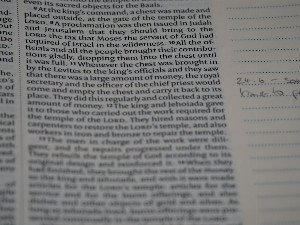Francesco Capitummino, Ruggero Longo
Rogerius structor. La cattedrale di Cefalù rivisitata
Introduction
Rogerius structor. La cattedrale di cefalù rivisitata. Esplora la Cattedrale di Cefalù, mettendo in discussione la sua cronologia costruttiva. Lo studio rivela come l'edificio fu completato sotto Ruggero II, sfidando il mito dell'incompiutezza.
Abstract
La cattedrale di Cefalù, così come ci è pervenuta, rappresenta il frutto di travagliate vicende che tengono conto di motivazioni di ordine politico e ideologo, ma anche, se non in primo luogo, di ordine tecnico, quale risultato – secondo la linea storiografica comunemente condivisa – di un’attività edilizia protrattasi per oltre un secolo dal 1131 sino al 1267, anno della consacrazione. Liberi da ogni condizionamento derivante dalla storiografia pregressa, il presente studio abbandona il mito di una cattedrale incompiuta e, attraverso una analisi attenta delle fonti, delle parti della fabbrica e dei suoi apparati decorativi, consente di mettere in discussione la cronologia comunemente accettata, e di affermare invece che l’edificio, nonostante i cambi di programma in corso d’opera, fu completato nella sua interezza entro il regno di Ruggero II (1130-1154).
Review
The article, "Rogerius structor. La cattedrale di Cefalù rivisitata," presents a provocative re-evaluation of the construction history of Cefalù Cathedral. The abstract clearly articulates the prevailing historiographical consensus, which posits a protracted and complex building campaign extending over a century, from 1131 to the cathedral's consecration in 1267, often implying an "unfinished" state. This study, however, boldly challenges this long-held narrative. By critically examining historical sources, the architectural fabric, and decorative schemes, the author proposes a radical new chronology, asserting that the cathedral, despite documented changes in plan during its construction, was essentially completed during the reign of Roger II (1130-1154). This reinterpretation represents a significant departure from established scholarship and promises a substantial contribution to the understanding of Norman architecture in Sicily. The explicit aim to discard the "myth of an unfinished cathedral" and to attribute its completion to Roger II's period of rule elevates the king's role as a patron and builder ("Rogerius structor") to a more immediate and comprehensive extent than previously recognized. The methodology, based on a meticulous analysis of primary evidence—sources, structural elements, and decorative apparatus—suggests a robust foundation for this ambitious claim, highlighting the potential for new insights into the political, ideological, and technical motivations shaping the cathedral's development. While the abstract lays out an intriguing and highly original thesis, it also raises important questions about the depth and nature of the evidence that will support such a dramatic chronological revision. Readers will be keen to understand how the study disentangles and reinterprets the "travagliate vicende" acknowledged at the outset, and what specific new data or analytical frameworks enable the refutation of over a century of scholarly consensus. In particular, the assertion of completion within Roger II's reign, even with "cambi di programma in corso d’opera," requires exceptionally strong argumentation to demonstrate how such alterations could be accommodated without extending the construction period significantly beyond 1154. This paper, therefore, sets a high bar for its internal arguments, but if successful, it has the potential to fundamentally alter our understanding of this iconic Norman monument.
Full Text
You need to be logged in to view the full text and Download file of this article - Rogerius structor. La cattedrale di Cefalù rivisitata from ABside .
Login to View Full Text And DownloadComments
You need to be logged in to post a comment.
Top Blogs by Rating
Beyond the Chart: The Nurse's...
By Sciaria
Reclaim Your Day: Mastering th...
By Sciaria
Beyond the Forbidden: When His...
By Sciaria
Favorite Blog
Your Digital Shadow: What Stat...
By Sciaria
Beyond the Stereotype: Unpacki...
By Sciaria
Beyond Repair Shops: Unlocking...
By Sciaria





